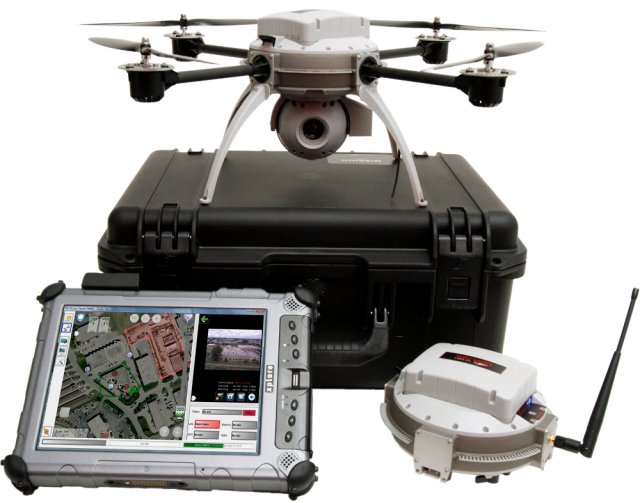New Mexico State University (NMSU), coordinating with the Federal Emergency Management Agency (FEMA) and the Federal Aviation Association (FAA), will use the Aeryon Scout system in a series of operational trials to determine the best concept of operations for small UAS (Unmanned Aerial Systems) to quickly assess storm damage to utility distribution systems.
The Aeryon Scout micro-UAS has been selected for the operational phase of the study, due to its intuitive user-interface, advanced capabilities, and ability to fly in adverse weather conditions. This phase of the programme will involve a series of field trials where the Scout will be tested in a variety of roles, including updating maps of electrical and other civil infrastructure and performing detailed component inspections. This information will ultimately be used to identify downed and damaged infrastructure much quicker than ground personnel could perform the same task. The information collected will be compared with known databases and repair parts ordered for repair crews.
“The Aeryon Scout was selected for the study because it exceeded all of the system specifications required for the project” said Dennis Zaklan, Deputy Director at NMSU. “The combination of ease of use and flight performance was paramount.”
“The Scout was designed to be used by anyone, anywhere, and at any time” stated Dave Kroetsch, president of Aeryon Labs. “It frees any operator – whether field worker, police officer or soldier – from the burden of flying manually by remote control, allowing them to focus on successfully completing the task at hand.”
Video and still images captured by the Scout are automatically geo-tagged, encoding image metadata and geo-spatial information into the image. This facilitates precise documentation and live sharing of any location for which imagery is recorded – useful in the coordination of repair crews to pinpoint the exact location of damage
As an unmanned alternative to manned aircraft such as helicopters, the Scout micro-UAS removes the human element from potentially hazardous environments such as high power electrical lines. Ground personnel are able to capture detailed images of this equipment at a safe distance, and at a fraction of the cost compared to helicopters or manual inspection.
Applications related to emergency response and disaster relief also stand to benefit from the capabilities of small UAS, including aerial terrain mapping, environmental assessment, search and rescue, fire management, and dealing with hazardous materials.
Source: Press Release

